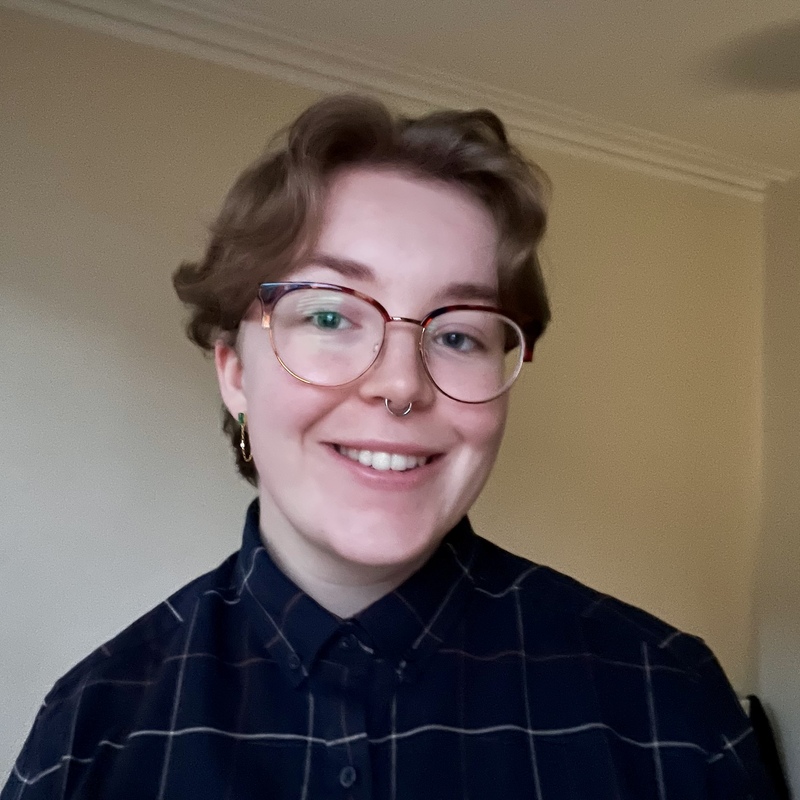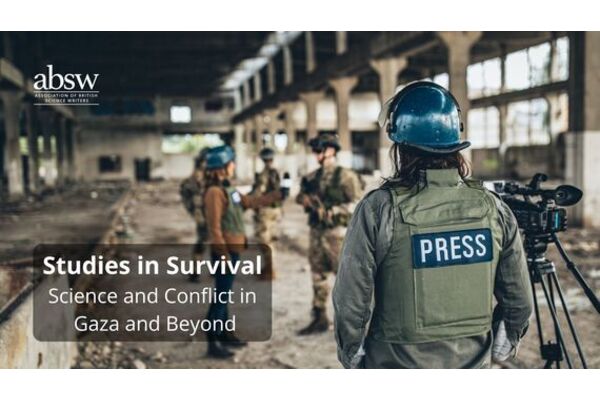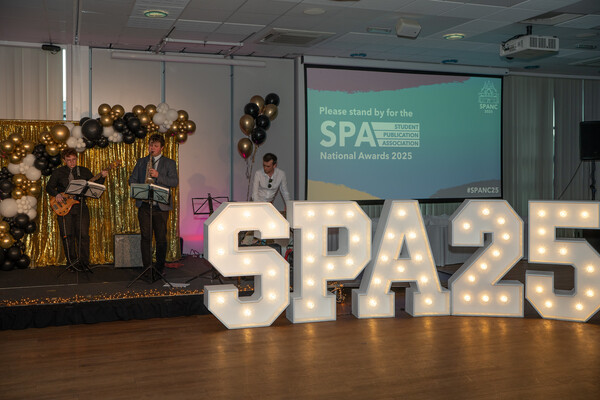The auditorium was full during the plenary session 'The future of science TV, radio and podcast' - Credits: Mark Lewis Photography
Navigating the science journalism industry as an early-career writer can feel daunting, getting to grips with skilled pitching, understanding how to take advantage of emerging tools and trends, and widening your reach. But thankfully, the science journalism community is here to help. Among important and engaging conversations on the state of the industry, panellists at UKCSJ24 offered some gems of advice for early-career writers. Here are the key takeaway points to help you take advantage of the conference.
Targeting an audience
Beginning as a writer first requires you to ask broad questions of yourself and your intentions that will help you find a direction to follow. One such question is:
‘Who do you want to write for?’ and from that,
- What outlet will reach them, and
- What will interest them?
- Will it be research progress, career beats, the potentials and inspiring futures of science, or perhaps the social interactivity of science?
Which you choose will depend on or inform the publications you pitch to, and their specific readerships will look for different types of stories and have distinct needs. For example, a reader of The Observer will be engaged differently from a reader of Nature. It is always crucial to read writer submission guidelines before pitching, to thoroughly understand what a publication seeks, and the unique engagement points, but you must also execute a style suited to their audience.
When writing, this means determining:
- the context they require;
- the appropriate level of detail;
- the tone;
- and the examples or case studies suited to create something accessible, informative, and entertaining.
It’s key to realise the needs of specialist magazine readers, like Physics World, are not entirely separate from readers of other specialisms unrelated to the story, or layman audiences. For example, an astrophysicist holds a different set of knowledge than a nuclear physicist – they will still need context and explanation. However, the base level will differ from non-specialist readers, for example, they will already know what an atom is so the context offered changes. The real difference is how you spin the hook to fit the appropriate discipline.
Alternatively, you may start with a topic you wish to write about rather than an intended audience. In this case, you should flip your questioning to:
- Who has not been served a particular story yet?, or
- Who is most likely to take value from this idea?
To explore the same idea for different audiences it is useful to remember different pivots stem from addressing the same commonalities;
- significant development;
- impact; and
- human interest.
Considering your audience, the type of story, and how you can help them take value from your writing, form pitches that flag the most relevant points for that audience and give the editor material that will convince their supervisor to commission you. As a freelancer, they are taking a punt, perhaps with someone they don’t know – prove you’re not a risk by knowing their audience well and the gaps in their coverage that will engage them.
Finally, landing a pitch is equally about timing as about quality. Sometimes it is worth keeping your eye on a piece of science to see how it develops rather than pitching it imminently.
The craft of writing
Once you have the audience, the angle and the story deciphered, the main structure needs to cover the following:
- Introduce the science with the why what, and the main whos. This gives the key context to the story;
- The body addresses three key points: what the science is doing, its wider applications, and the hopes in moving forward;
- Sources add character to aid you in telling this story, colouring it with interesting voices and taking it out of the abstract.
To add character and interest to the way you write, use storytelling mechanisms, like metaphors, which help translate scientific ideas into understandable language and familiar concepts. This inclusive tool will help readers take meaning and value from your work and it caters to the less informed, avoiding exclusionary language. An example from ‘Skeleton Crew’ by Mark Peplow looks at analogising molecular editing:
‘Synthesising a drug molecule… is a little like clipping together a house from Lego bricks; remodelling the exterior of a completed house is trivial, but inserting a brick into the middle of a wall can’t be done without taking the house apart.’
This approach can also be used to familiarise readers with the language of diagrams, like skeletal formula:
'To the uninitiated, organic chemistry looks like a baffling parade of hieroglyphs — a blizzard of zigzags and hexagons whirling across the page. Yet these diagrams are a visual lexicon, rich in information about the molecules they represent. Each vertex in a shape represents a carbon atom… then there’s a liberal seasoning of letters, representing atoms such as oxygen, nitrogen or sulfur, peppered across the molecule’s skeleton and periphery.’
Practical use of AI
Understanding how to take advantage of AI tools before they are mainstreamed into journalistic organisations and processes could offer an advantage, in being prepared for the change.
AI chatbot tools like ChatGPT offer a valuable resource to:
- develop ideas;
- construct logical plans;
- offer initial drafts;
- interpret code or data; and
- retrieve information or relevant page numbers from documents.
If you’re struggling to knock the writer’s block, structure an article, or source relevant content in papers, learning to use AI could help develop those skills.
Despite vast usability, caution must be taken. Having the first and last word in modifying anything AI provides is important. This ‘human-in-the-loop’ framework for AI use protects against copyright infringement and AI information fabrication and from letting the robot speak for us.
Adapting to the future
At UKCSJ24, the panel ‘The future of science journalism’ emphasised multimedia and social media platforms, not just focusing on written articles.
The key factors editors and readers alike are looking for are:
- Storytelling ability;
- Authenticity and originality;
- Analysis;
- Strong identity; and
- Interaction.
Learning to use innovative storytelling methods and embrace digital platforms is key. These actions will help you build those principles by:
- Accessing new format possibilities that are not possible through traditional writing means;
- Building a personal brand and de-formalising science conversations;
- Garnering an audience and interacting with them directly, to answer their questions and understand what they want to see;
- Being multilingual – developing unique skills to bridge the traditional/modern media gap by speaking the language of the journal and the magazine but also social media like TikTok;
- Finding a community and a network of people with like-minded interests.
The focus on ‘you’ as a character is a new way of approaching science journalism but it has been seen in television, with figures like Brian Cox and David Attenborough. This might be achieved in print and online means by:
- having a recognisable beat in your portfolio;
- a distinct voice; and
- being opinionated.
Your beliefs and opinions contribute to your identity but also earn audience interaction and response – be mindful and grounded in evidence, but use them.
One final piece of advice from the conference overall was to make connections. This means developing existing journalistic relationships by asking for feedback and keeping in touch with previous sources, but also finding new ones. Build a community of peer freelancers (try the ABSW Early Career Science Writers Network and the Discord server), cold email writers of interest, and apply for fellowships, internships and mentoring schemes.
This content was also shared on ABSW Resources page.

Grey Enticknap is a freelance science writer at the outset of their career. Currently covering conversations in the culture of STEM and journalism they are intrigued by the interactions between science and society. They also have experience in technical scientific writing, copyediting science magazine content, and podcasting. Before pursuing freelancing, Grey earned a Master’s in Natural Sciences (Neuroscience & Science Policy, Communication and Ethics) from University College London where they developed a committed interest in neurodegenerative disease and public engagement.








